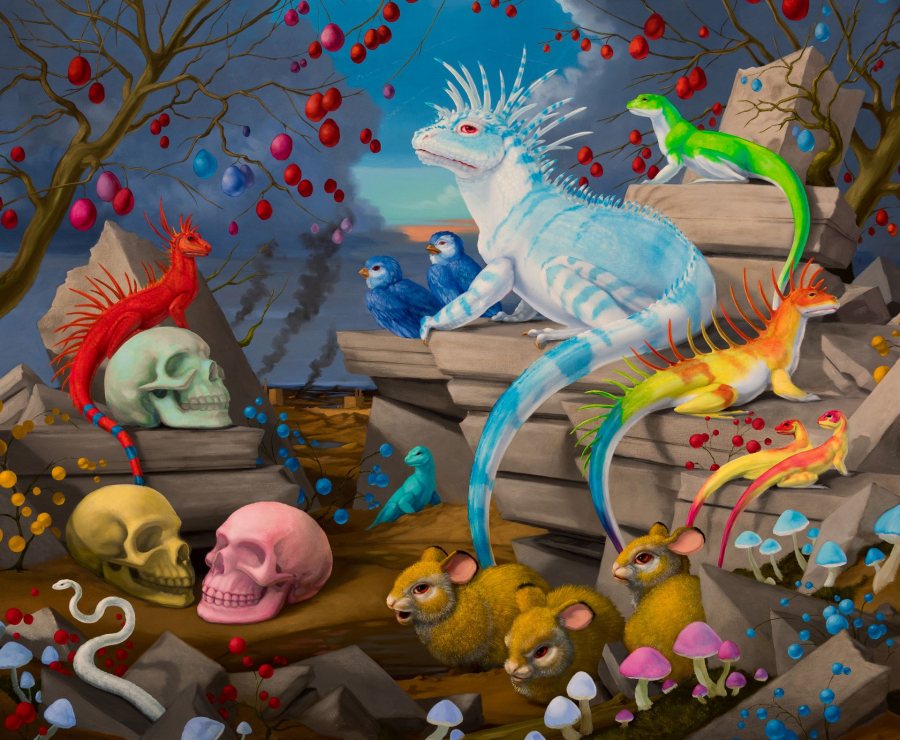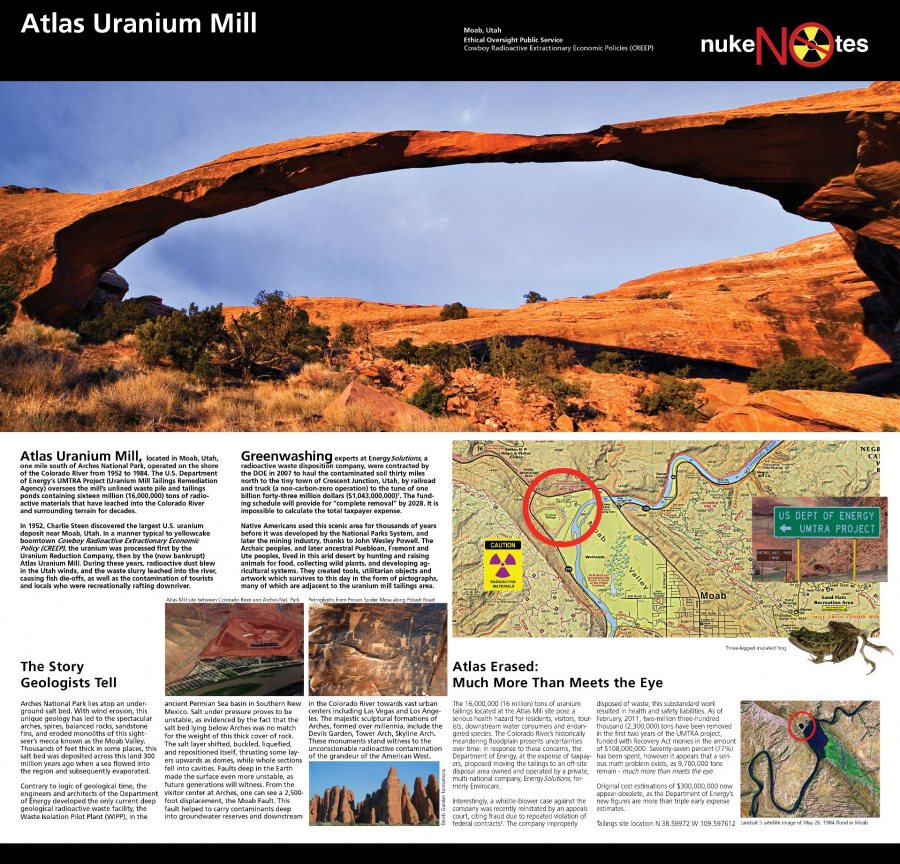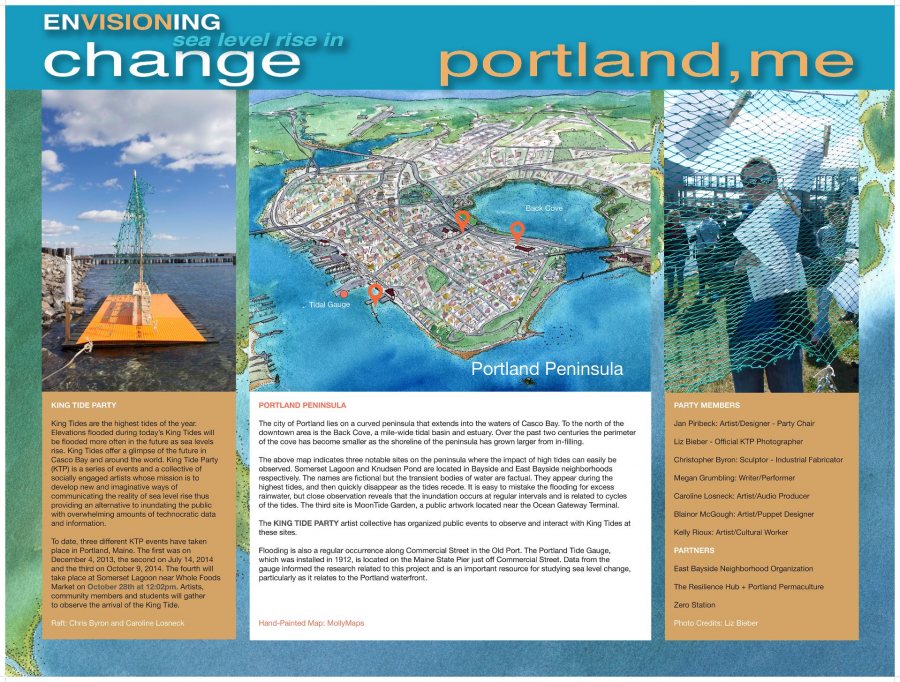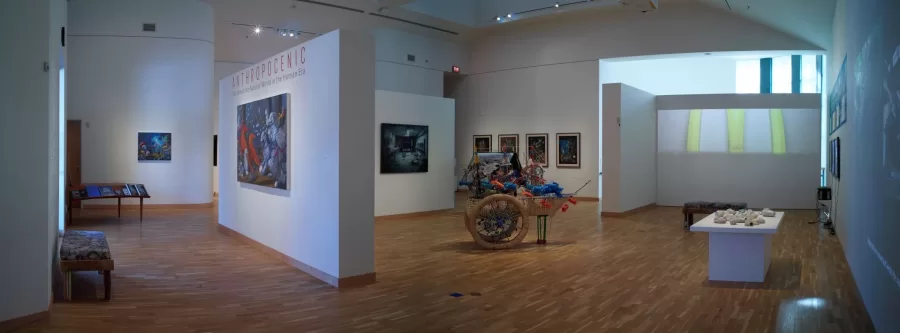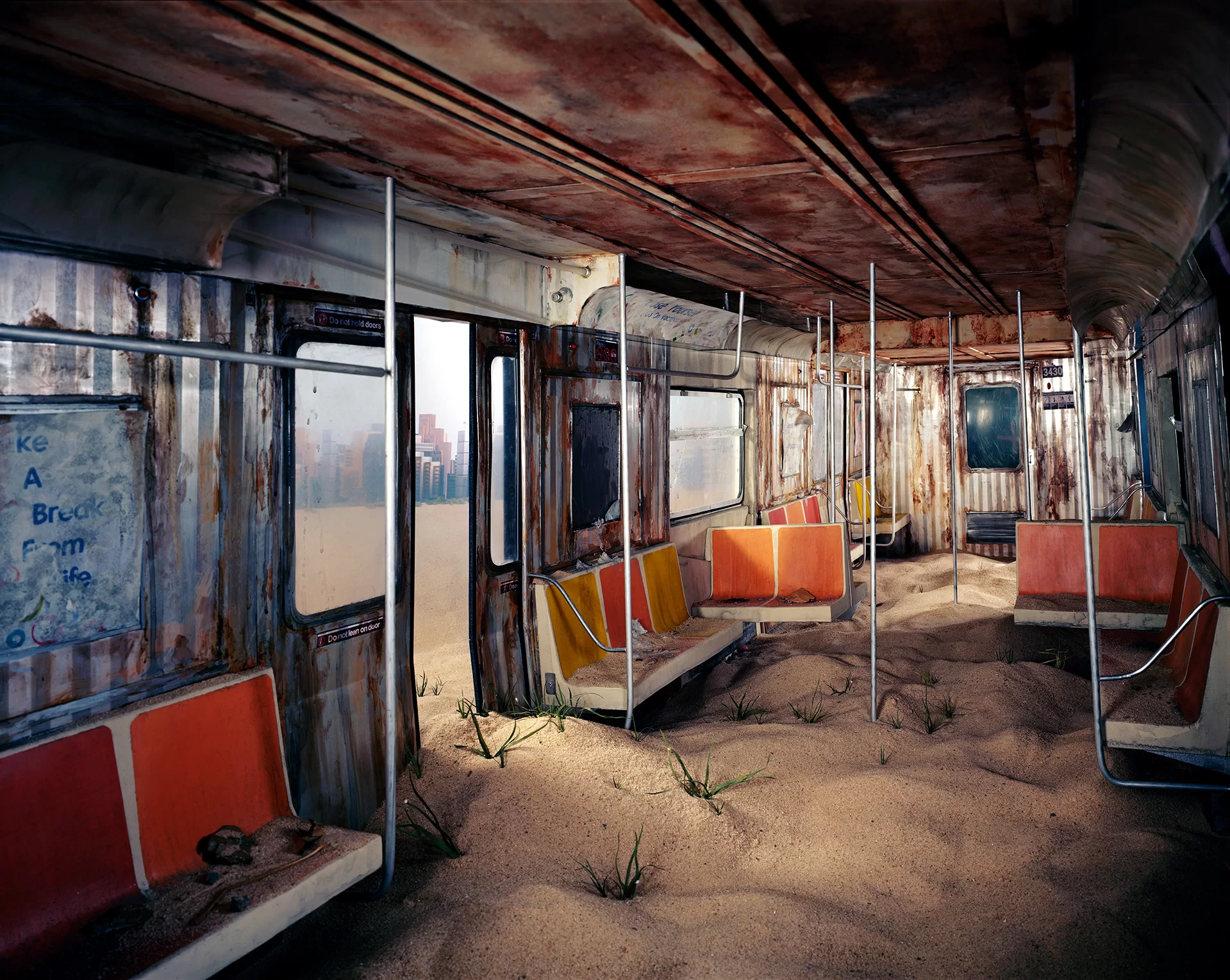
Anthropocenic:
Art About the Natural World in the Human Era
October 27, 2018 – March 23, 2019
Geologists have been thinking about how the Holocene, the geological period that began after the end of the last ice age around 12,000 years ago, has been replaced by the Anthropocene. This potential new epoch is named for humans and is defined as one in which our impact on the world has been so acute that it is in the geologic evidence. A debate continues about this idea, and about the precise beginning date of a new era. Several dates and causes are often discussed as the beginning of the Anthropocene: 1610, the huge migrations of Europeans to the Americas, the germs they brought and death of 50,000,000 indigenous people and the change on the plant-life, carbon and atmosphere from this that is in geologic evidence in Antarctic cores; 1950, the peak of soot from high-temperature coal combustion worldwide due to the accelerating industrial revolution; and 1945 or 1964, years that are discernable by high levels of radioactive isotopes in rock layers due to fallout from nuclear testing. Regardless of whether one is ultimately chosen as the beginning of the Anthropocene, each provides rock solid evidence that humans have had environment-changing impact on the natural world. And we could also consider them collectively, because, after all, a few decades or centuries are negligible in The Geological Time Scale.
Anthropocenic: Art About the Natural World in the Human Era is a topical and compelling group exhibition by artists who make art about nature, the natural world, and our effect on and interrelation with it in the 21st century. The artists explore the relationship of humans to the world with widely varied conceptual strategies, artistic practices, and media. Some address the human impact on the natural world directly, while for others the relationship to the Anthropocene is more oblique. The exhibiting artists work in most media from painting and sculpture to video and infographics. Some of the strategies they employ include incorporating the sciences and other disciplines into their work; working with teams of artists, scientists, students, and others; and creating project-based works exploring the theme.
Participating Artists:
Jennifer Allora & Guillermo Calzadilla (b. 1974 Philadelphia & b. 1971 Havana), live in Puerto Rico
Sammy Baloji (b. 1978 Lubumbashi, Democratic Republic of the Congo) lives in Lubumbashi and Brussels
Timothy Berry (b. 1948 Akron, Ohio), lives in San Francisco
Ursula Biemann (b. 1955 Zurich, Switzerland), lives in Zurich
Michel Droge (b. 1958 Willimantic, Connecticut), lives in Portland, Maine
Deb Hall (b. 1956 Moses, Washington), lives in Gansevoort, New York
Adriane Herman (b. 1966 New York, New York), lives in Cape Elizabeth, Maine
Laurie Hogin (b. 1963 Chicago), lives in Urbana, Illinois
Isabella Kirkland (b. 1954 Old Lyme, Connecticut), lives in Sausalito, California
Eve Andree Laramee (b. 1956 Los Angeles), lives in Brooklyn and Santa Fe, New Mexico
Michael Light (b. 1963 Florida), lives in San Francisco
Nathalie Miebach (b.1972 Zeven, Germany), lives in Boston
Lori Nix/Kathleen Gerber (b. 1969 Norton, Kansas/b. 1967, Belleville, Illinois), live in Brooklyn
Jan Piribeck (b. 1951 Christopher, Illinois), lives in Portland, Maine
Julie Poitras Santos (b. 1967 Bangor, Maine), lives in Portland, Maine
Superflex (1993 founded in Copenhagen, Denmark), live in Copenhagen
Maika’I Tubbs (b. 1979 Kapahul, Hawai’i), lives in Brooklyn
Curator:
Dan Mills, Director, Museum of Art, and Lecturer in the Humanities
Programming Curators:
Jane Costlow, Clark A. Griffith Professor of Environmental Studies
Anthony Shostak, Education Curator
Curatorial Assistant:
Emerson Krull ‘19
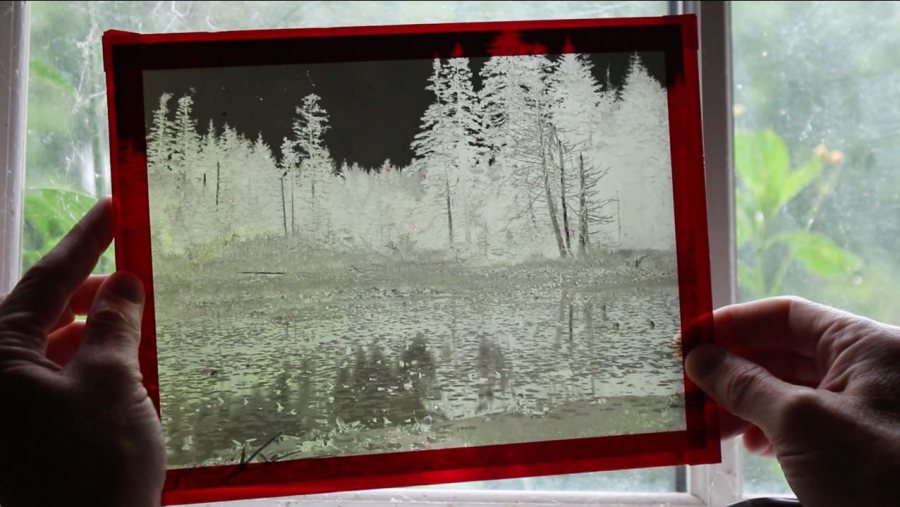
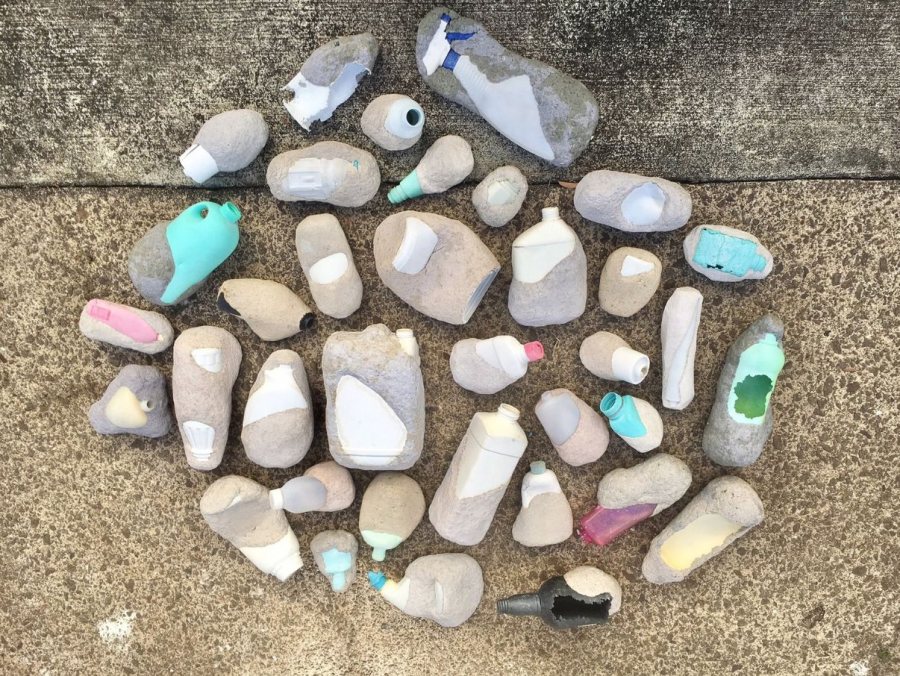
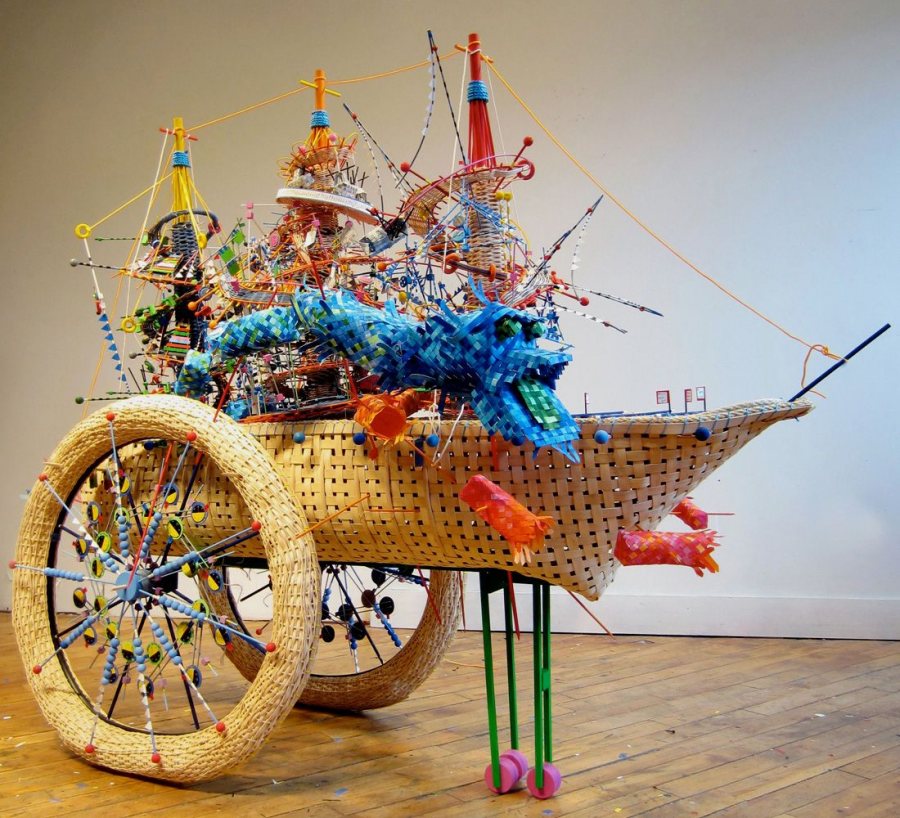
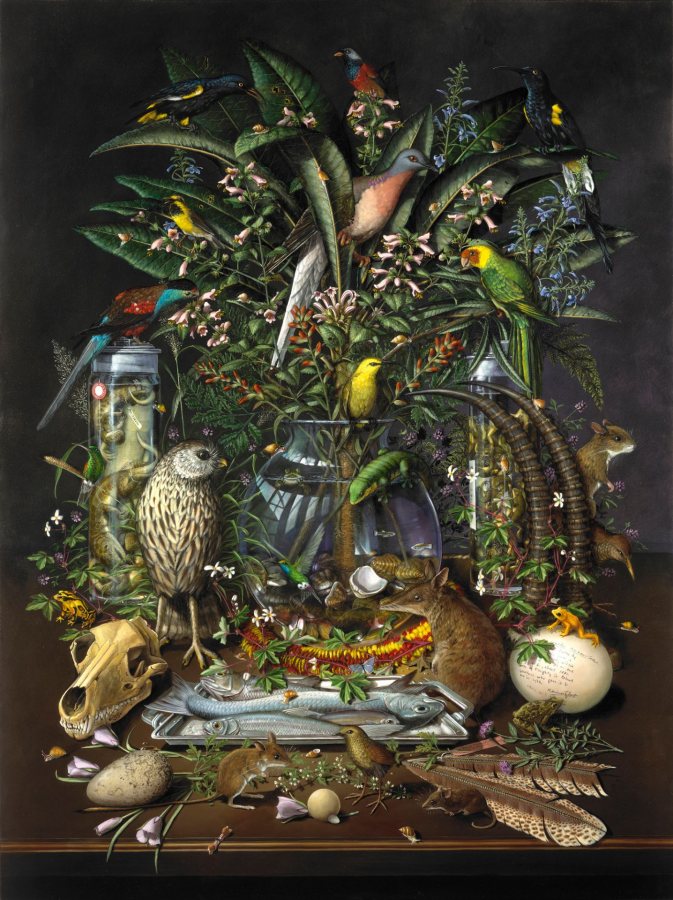
digital print, 35 x 26 inches, Bates Museum of Art purchase with the Dr. Robert A. and Minna F. Johnson ’36 Art Acquisition Fund, and the Abraham and Bella Margolis Art Fund, 2013.2.3
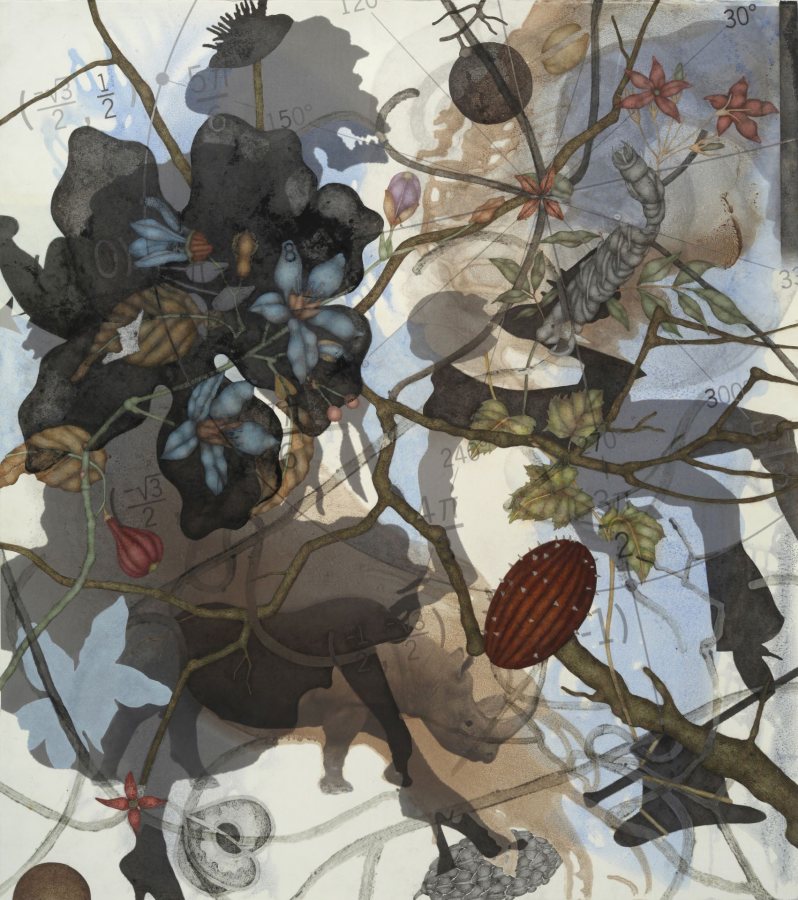
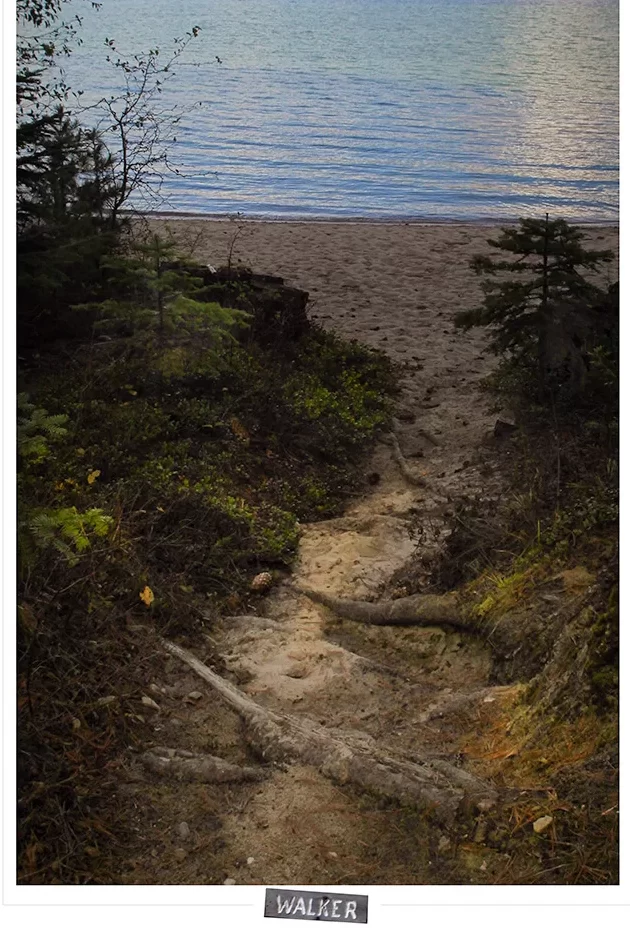
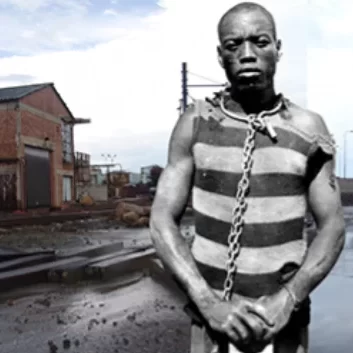
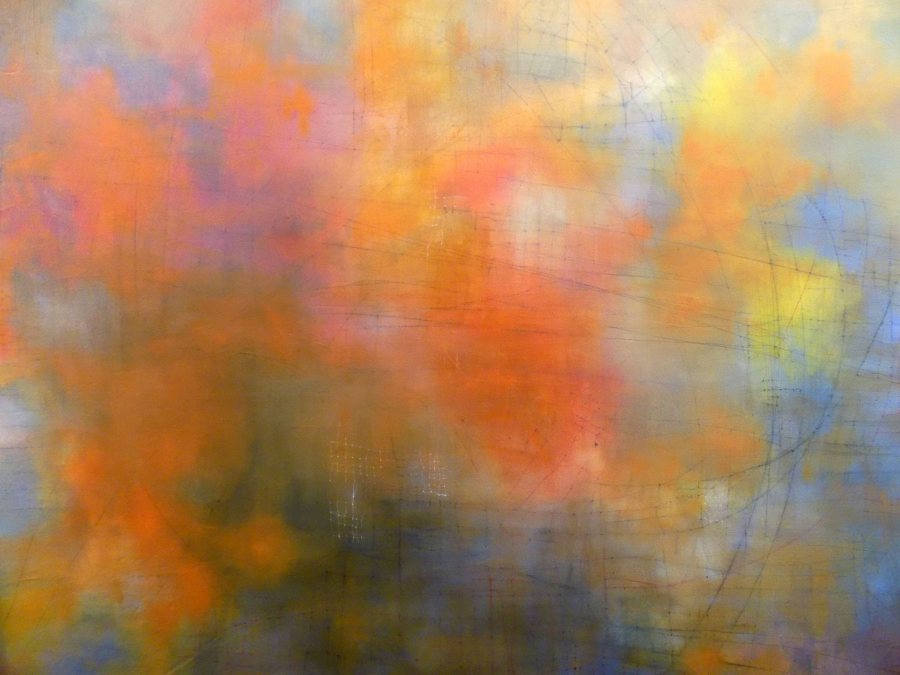
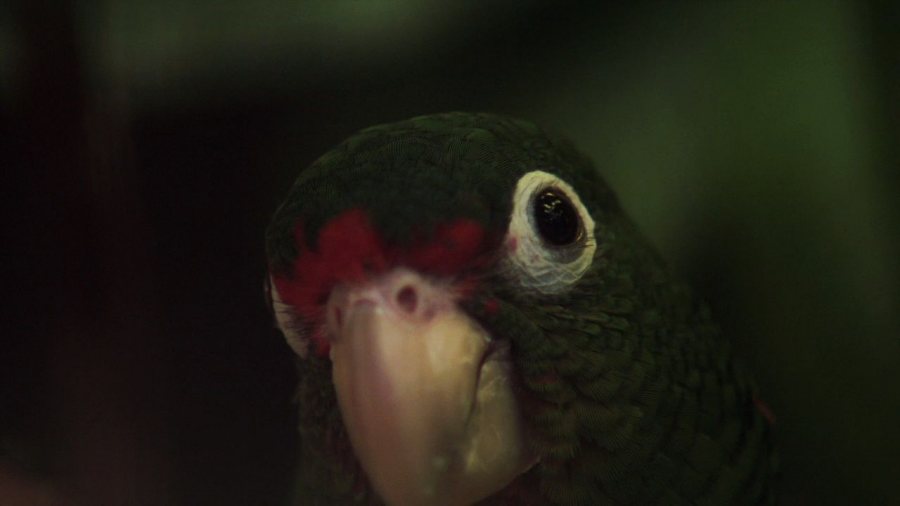
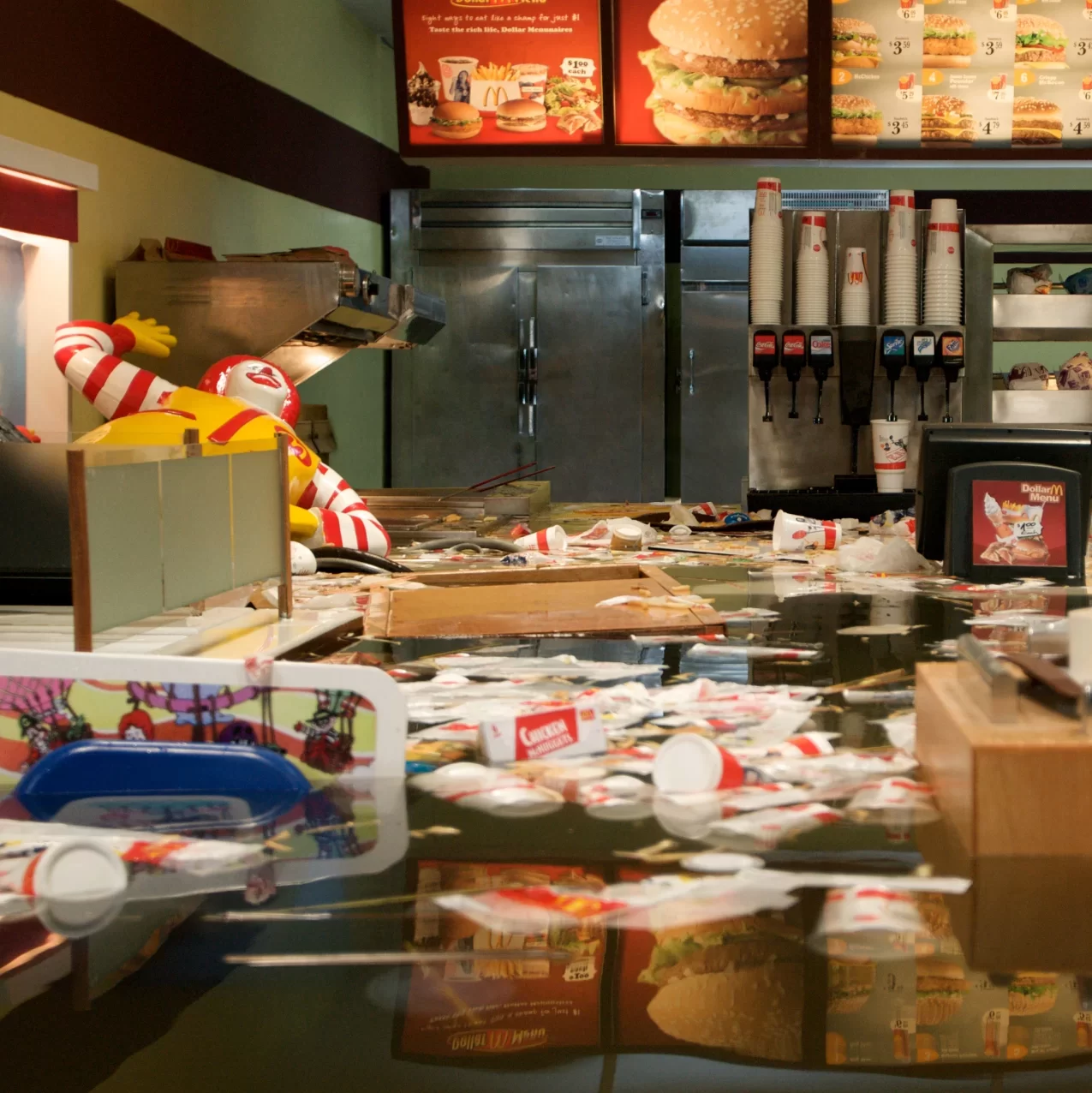
film, 21 minutes (still), courtesy of the artists
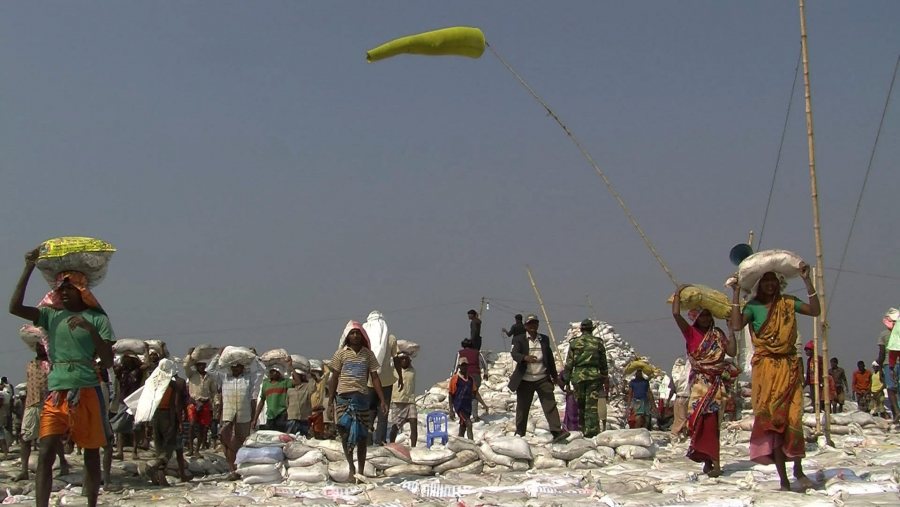
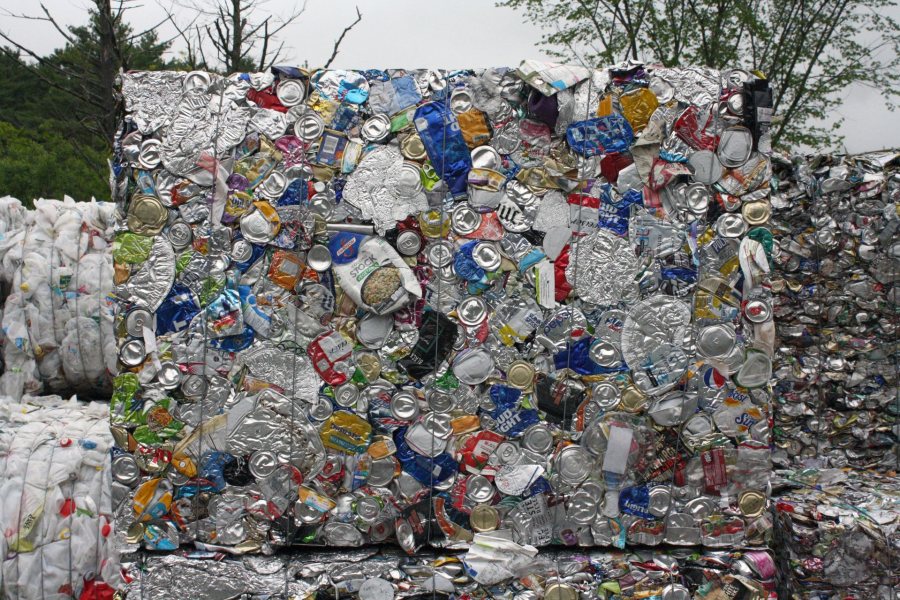
courtesy of the artist
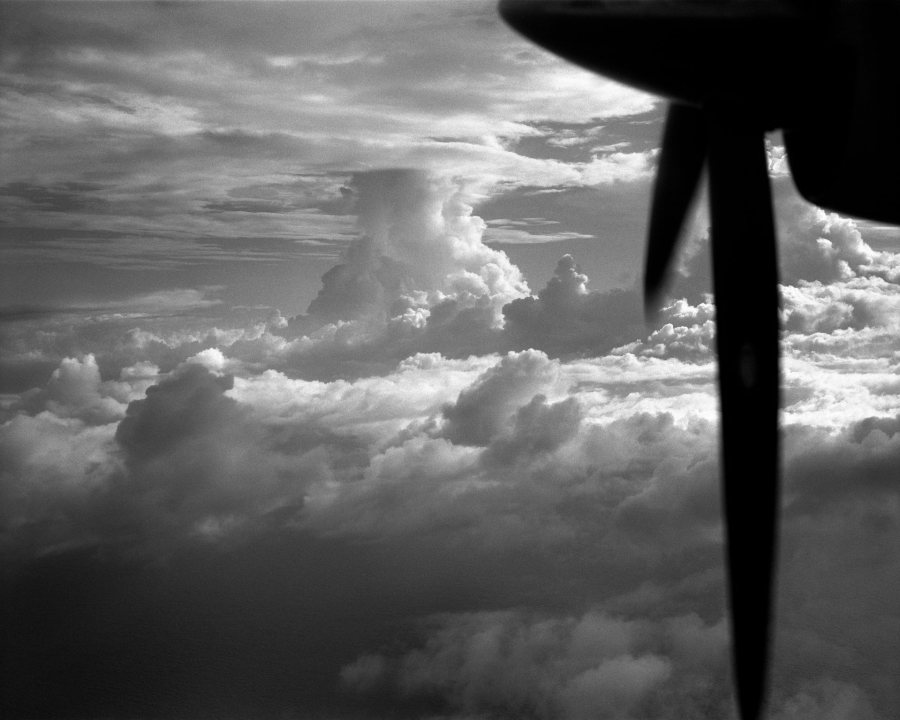
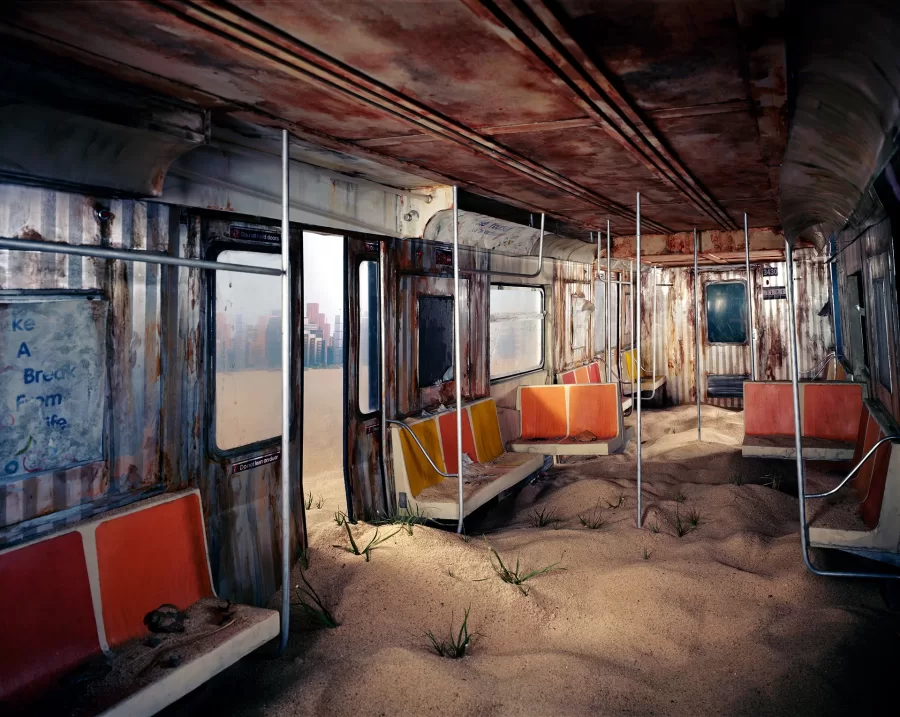
courtesy of the artists and Clampart Gallery, New York
